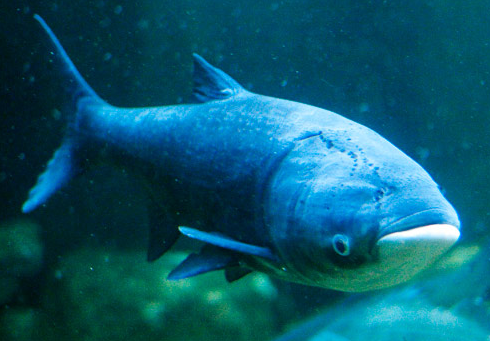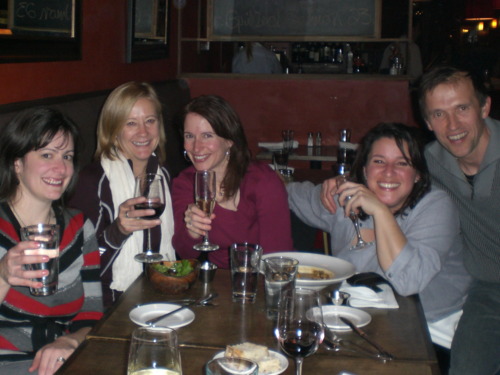
Below is a New York Times article about how romance ebooks are all the rage, which, I hope, means nothing but good things for the likes of me.
I’ll admit I’ve been worried about the advent of ebooks and have cursed the writing gods for inspiring me to write a book when traditional publishing is in such trouble. Why, I ask those gods, didn’t I have the urge to write “Thrown” in 2000, or even 2008? Why now, when ebooks are seemingly taking over the world, Kindles are hotter than Indonesian volcanoes and new authors are being paid less than ever for their stories, especially those that are only published electronically?
But you know what? I hope against hope that someone will pay me for writing “Thrown,” and even if Amanda, Grady and their cohorts face the world from a screen and never on a printed page, it still means someone thought my story was good enough to pay money for. And that’s something to shake a stick at. If nobody pays me for my book, did I waste my time? No. There’s still a chance I could self-publish, although my ten years at Warner Books make me want to go through traditional publishing channels, narrow and dark though they may appear. The other challenge to self-publishing, as far as I can tell, is you have to do more self-promotion because you’re all you’ve got. Not that a publishing house is going to spend a lot to promote a brand new, unproven author. But still, you have a publisher giving your talent some credence. And if neither of those avenues work, if “Thrown” stays put on my MacBook forever, the fact is I have a completed manuscript to my credit and it was an out-and-out blast to write. That alone makes it worthwhile.
(Writing update: Tom finished proofing the latest version of “Thrown” yesterday, and I’m thrilled to report that he cried at one of the new parts (!!!). SO happy about that. Still on track to send my manuscript to Gail-the-agent on Wednesday. The celebratory bubbly will flow that evening.)
Without further ado, here’s the article, with input from the woman who has the delightfully titled blog, Smart Bitches, Trashy Books at http://www.smartbitchestrashybooks.com/index.php.
Lusty Tales and Hot Sales: Romance E-Books Thrive
Sarah Wendell, blogger and co-author of “Beyond Heaving Bosoms,” is passionate about romance novels.
Except for the covers, with their images of sinewy limbs, flowing, Fabio-esque locks or, as she put it, “the mullets and the man chests.”
“They are not always something that you are comfortable holding in your hand in public,” Ms. Wendell said.
So she began reading e-books, escaping the glances and the imagined snickers from strangers on the subway, and joining the many readers who have traded the racy covers of romance novels for the discretion of digital books.
If the e-reader is the digital equivalent of the brown-paper wrapper, the romance reader is a little like the Asian carp: insatiable and unstoppable. Together, it turns out, they are a perfect couple. Romance is now the fastest-growing segment of the e-reading market, ahead of general fiction, mystery and science fiction, according to data from Bowker, a research organization for the publishing industry.
Publishers and retailers, spying an opportunity, have begun pursuing in earnest those enthusiastic romance readers who have abandoned print for digital.
“Romance,” said Matthew Shear, the executive vice president and publisher of St. Martin’s Press, which releases 40 to 50 romance novels each year, is “becoming as popular in e-books as it is in the print editions.”
When “Maybe This Time,” a lighthearted ghost romance by the best-selling author Jennifer Crusie, went on sale in August, it sold as many e-books as hardcover books in its first week, Mr. Shear said, a phenomenon that he began noticing this summer with other romance titles.
At All Romance, an online retailer that sells only e-books, sales have more than doubled this year, and the most sought-after titles are usually the raciest.
“It’s easier to check out some naughty little title online than in a brick-and-mortar store where your pastor could step up in line behind you,” said Barb Perfetti, the chief financial officer of All Romance. “We’ve had lots of customers write to us and say, ‘Now I don’t always have to show my husband what I’m reading.’ ”
Barnes & Noble, the nation’s largest bookstore chain, is courting romance readers more aggressively than ever. William Lynch, the chief executive, said in an interview that until recently Barnes & Noble was a nonplayer in the huge romance category, but that it now has captured more than 25 percent of the market in romance e-books. Sometime next year, he said, he expects the company’s e-book sales in romance to surpass its print sales.
“This is a new business for us,” Mr. Lynch said. “Romance buyers are buying, on average, three books a month. That buyer is really, really valuable.”
Dominique Raccah, the publisher and chief executive of Sourcebooks, an independent publisher in Naperville, Ill., said her romance e-book sales had grown exponentially this year, outpacing any other category. In the first quarter 8 percent of total romance sales at Sourcebooks were from e-book sales. By the third quarter that number had gone up to 27 percent. (Major trade publishers say e-books now make up about 9 to 10 percent of overall sales.) “You’re seeing the real development of a market,” Ms. Raccah said.
Romance is a natural leader here. The genre took off in the 1980s, when it expanded from the typical dreamy or bodice-ripping historical novels to include contemporary, plot-driven stories with characters drawn from real life. (Happy endings, though, are still required.) In 2009, when more than 9,000 titles were published, romance fiction generated $1.36 billion in sales, giving it the largest share of the overall trade-book market, according to the Romance Writers of America, which compiles statistics on romance books.
Nearly 75 million people read at least one romance novel in 2008, the group said. (Ms. Wendell and her co-author, Candy Tan, wrote in “Beyond Heaving Bosoms” that romance novels are “easily the most-hidden literary habit in America.”)
Romance readers tend to be women ages 31 to 49 who are — contrary to the popular image of Miss Lonelyhearts living vicariously through fictional tales of seduction — in a romantic relationship, according to the writers group. They frequently fly through a book or more a week, and from the beginning they have jumped at the chance to store hundreds of titles on a single device — where the next happy ending is a download away.
Print sales of romance novels are still strong at retailers like Wal-Mart and Target. But Mr. Lynch of Barnes & Noble predicted that chain drugstores like CVS and Duane Reade would eventually decrease the shelf space devoted to print books.
It is difficult to predict what expanding e-book sales will do to print sales in the long term. Kelly Gallagher, the vice president for publishing services for Bowker, said that e-book sales were “definitely cannibalizing print,” a prospect that worries publishers. But some, like Random House, are rushing to convert their backlist books into digital form to the delight of romance readers, who tend to be fiercely loyal to authors. Harlequin Enterprises has digitized nearly 10,000 titles, dating back to 2002.
“Once a romance reader acquires an author they love, they will often go in and buy all the backlist,” said Allison Kelley, executive director of the Romance Writers of America. “When books were out of stock or out of print, they were hard to find. But e-books have changed all that.”
Kathryn Popoff, vice president for trade book merchandising for Borders, said backlist titles were especially popular with romance readers because the print books had such a short shelf life in stores — usually only a month.
“If you missed it, you have an opportunity to go back to the Borders site and download that book,” she said.
To pursue these readers Barnes & Noble has started a “romance store” for its Nook Color, a new dedicated e-reader that the company is marketing heavily to women. Some publishers have tried to hook readers by selling the first book in a series for as little as $2.99 — a discount from the more typical $5 or $8 for the most popular romance e-books on BN.com, for example. (The price for a mass-market paperback is often about the same as its digital version.)
Small-press publishers that specialize in romance e-books have popped up in recent years, along with Web sites that exclusively sell digital books, like All Romance. Last summer Harlequin created Carina Press, an imprint that specializes in digital romance books.
“We want to make it super convenient for readers to access that material however they choose to do it,” said Donna Hayes, the chief executive of Harlequin.
Even if, lately, many of the e-book versions of romances arrive without a cover. Jane Litte, the pseudonym of an Iowa lawyer who writes the popular romance blog Dear Author (dearauthor.com), said she had noticed that about half of the romance novels she downloaded had their covers missing.
“It’s an irritant,” she said, blaming publishers for not securing the digital rights for cover art. “I don’t love the covers, but I’d rather have them than not have them.”
COMMENTS




